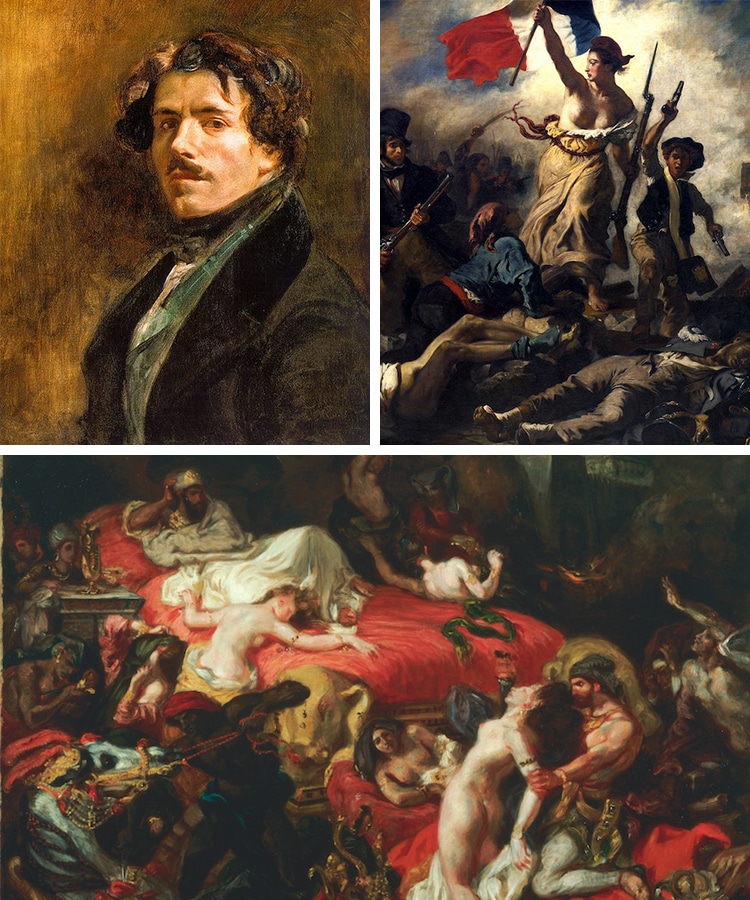
Towards the end of the 18th century, a new art movement emerged called Romanticism. This widespread cultural period celebrated the spiritual side of humanity, the sublimity of nature, and individualism through dramatic, large-scale paintings. At the forefront of this remarkable style was the French artist Eugène Delacroix.
Delacroix and his contemporaries influenced the landscape of painting, which for decades had been dominated by the austere and intellectual aesthetics of Neoclassical art. Delacroix utilized the emotional qualities of color and expressive brushstrokes to create a range of spectacular pieces inspired by the political events of Europe, mythology, and his visits to North Africa. The evocated qualities of his paintings, which were unprecedented for the time, had a lasting impact on future artists, most notably, the Impressionists.
Here, we will learn more about Delacroix’s art and the characteristics of his style.
Who was Eugène Delacroix?
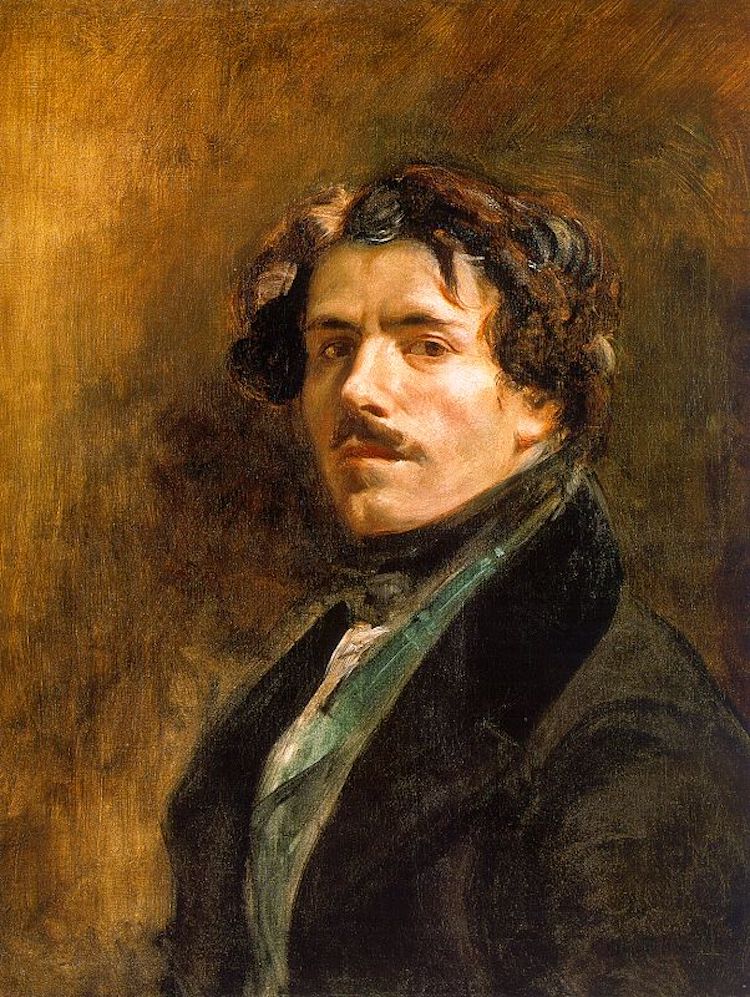
Eugène Delacroix, “Self-Portrait,” 1837 (Photo: Wikimedia Commons, Public Domain)
A master of color, movement, and drama, Eugène Delacroix (1798 – 1863) was a leader of the Romanticism art movement and an influential figure in the work of the Impressionists. His oeuvre spanned contemporary events, mythological scenes, Orientalism, and portraiture.
Born outside of Paris, Delacroix began his creative career by studying under Neoclassical artist Pierre-Narcisse Guérin and learning to paint in a realistic style that emphasized modeling and design. As he continued working, Delacroix’s style became looser and less refined, but it was not until he saw Théodore Géricault’s painting, Raft of Medusa, that he fully embraced the Romantic style.
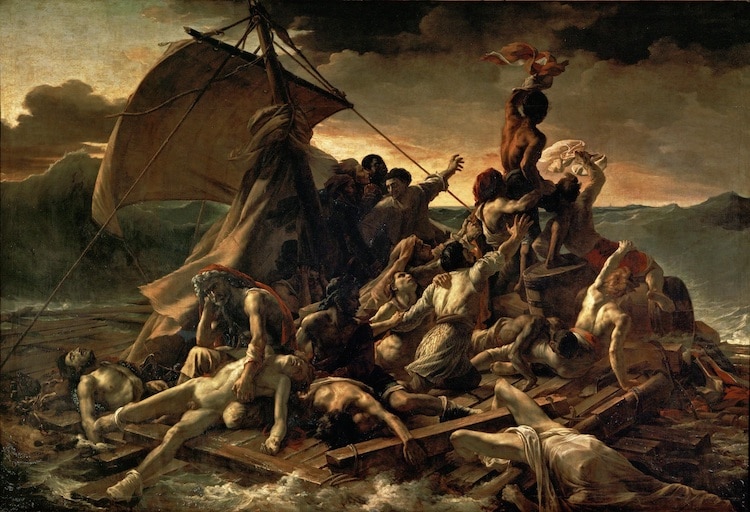
Théodore Géricault, “The Raft of Medusa,” 1819 (Photo: Wikimedia Commons, Public Domain)
Finding inspiration in the masters of the Venetian School and in the art of Baroque painter Peter Paul Rubens, Delacroix discovered that through color, visible brushstrokes, and dynamic compositions, he could convey drama, movement, and especially, emotion—which was the foundation of all Romantic art.
Characteristics of Delacroix’s Style
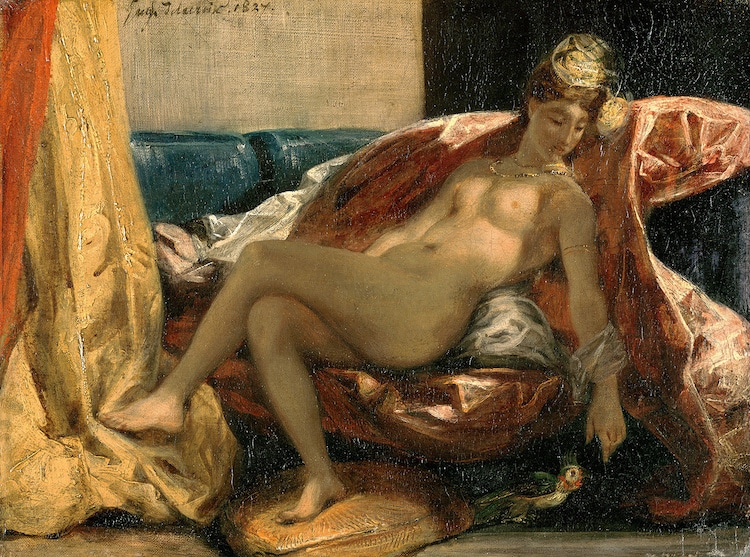
Eugène Delacroix, “Woman With a Parrot,” 1827 (Photo: Wikimedia Commons, Public Domain)
Color
Color was at the heart of Delacroix’s painting style. As an avid student of color theory, he created thoughtful palettes which enhanced the subject matter of his paintings. In particular, he employed color harmony (combination of two or more colors) and contrasting colors (colors that are at opposite ends of the color wheel) to enrich his compositions.
Expressive Brushstrokes
Delacroix’s approach to painting is often seen as a precursor to the Impressionists. He did not try to disguise the texture of his brushstrokes and instead made them more aggressively visible. These traits helped him express mood and create a sense of movement.
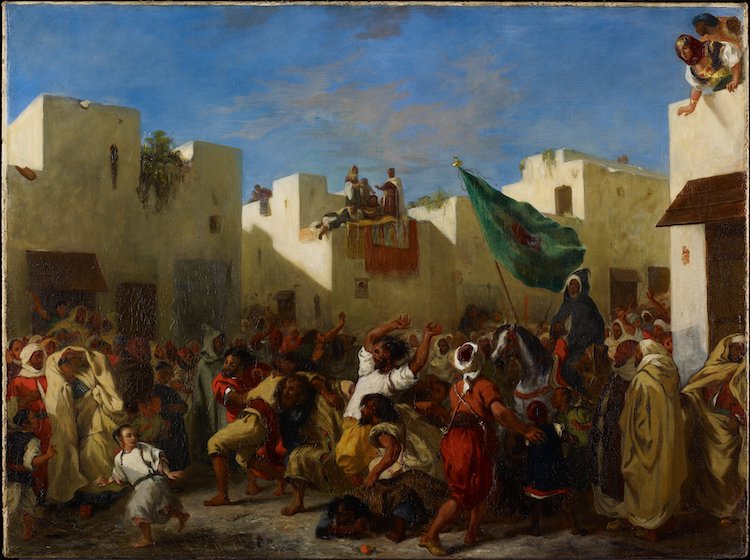
Eugène Delacroix, “The Fanatics of Tangier,” 1837-8 (Photo: Wikimedia Commons, Public Domain)
Dynamic Compositions
Delacroix was drawn towards large-scale scenes of action, which oftentimes included numerous figures within one canvas. As a result, he became known for constructing dynamic compositions that utilized foreshortening, perspective, and twisting figures.
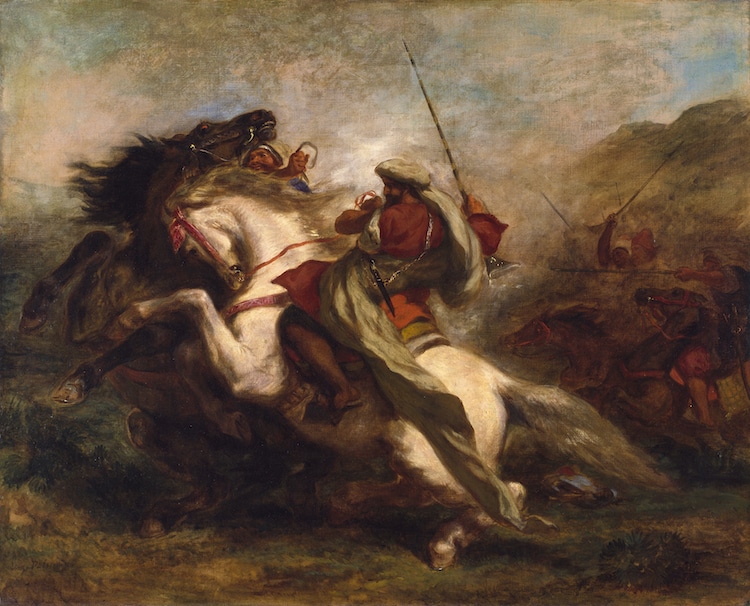
Eugène Delacroix, “Collision of Moorish Horsemen,” 1843-44 (Photo: Wikimedia Commons, Public Domain)
Animals
Delacroix often used animals—particularly horses and large cats—to enhance the emotional drama of his paintings. Additionally, the wild nature of animals embodied the ideals of Romanticism.
Major Works
Death of Sardanapalus, 1827
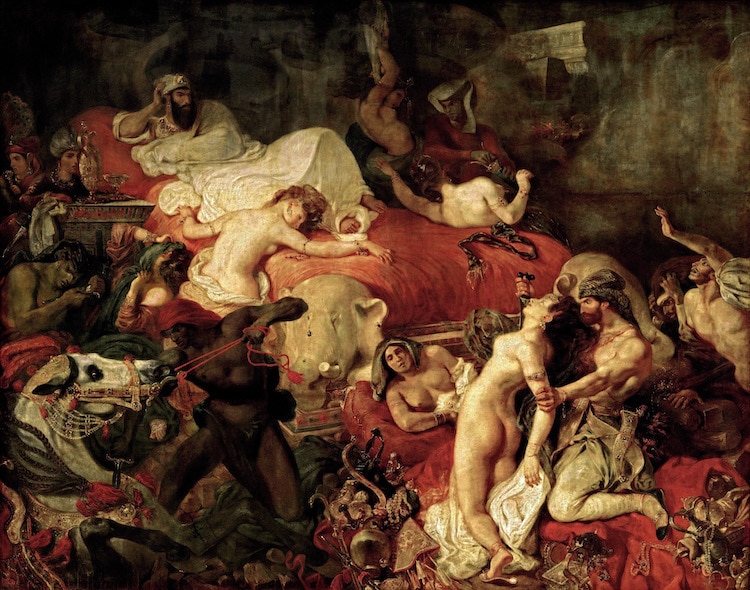
Eugène Delacroix, “Death of Sardanapalus,” 1827 (Photo: Wikimedia Commons, Public Domain)
The Death of Sardanapalus is a massive oil painting based on the story of the last king of Assyria, Sardanapalus, who, instead of surrendering to his enemies, ordered a funeral pyre that included himself, all of his possessions, and his concubines. Delacroix filled the canvas with a striking color palette of red and creams as well as visible brushstrokes, all of which add to the chaotic and violent narrative of the unfolding scene.
Liberty Leading the People, 1830
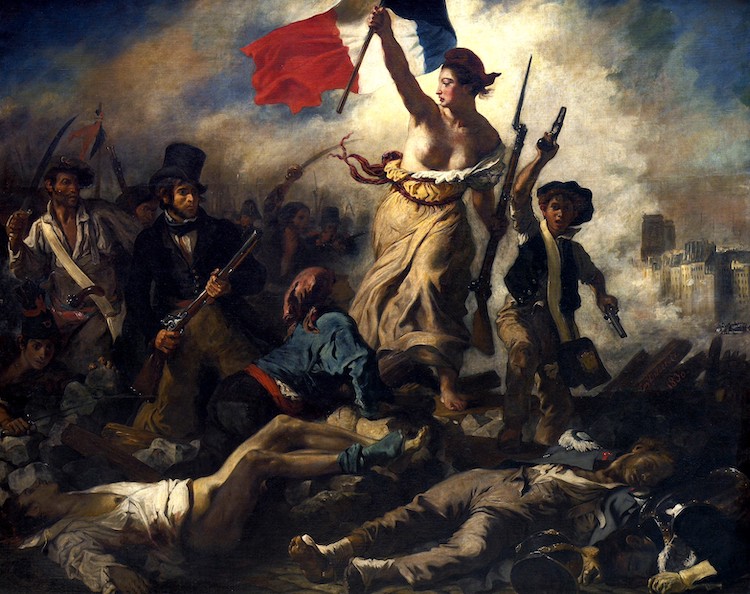
Eugène Delacroix, “Liberty Leading the People,” 1830 (Photo: Wikimedia Commons, Public Domain)
In the fall of 1830, Delacroix completed what would become his most famous and admired painting entitled, Liberty Leading the People. Set on the streets of Paris (Notre-Dame Cathedral can be seen in the smoke-filled background) and full of symbolism, the large-scale painting shows Parisians following a female figure carrying the French flag. This allegorical character is commonly believed to be an early version of Marianne, a personification of the French Republic, and intended to embody the concept of liberty.
Women of Algiers, 1834
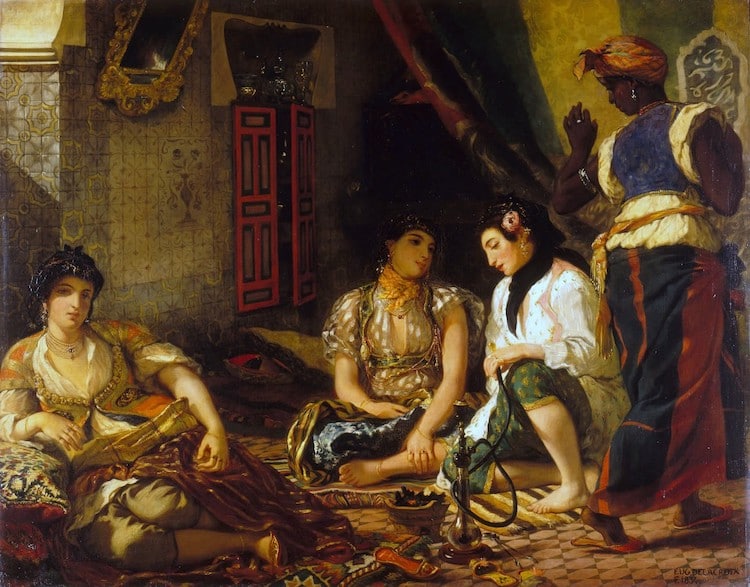
Eugène Delacroix, “The Women of Algiers,” 1834 (Photo: Wikimedia Commons, Public Domain)
After visiting North Africa, Delacroix created a series of Orientalist-inspired paintings. The Women of Algiers is one of the most significant works that he produced during this time, depicting a group of Algerian women lounging in an opulent room that’s full of color and patterns. Located at the Musee Fabre in Montpellier, France, this painting has been visited by other major artists including Vincent van Gogh, Paul Gauguin, Pablo Picasso, and Paul Cezanne, who site the piece’s lavish color as a major influence in their own art.
Later Life & Legacy
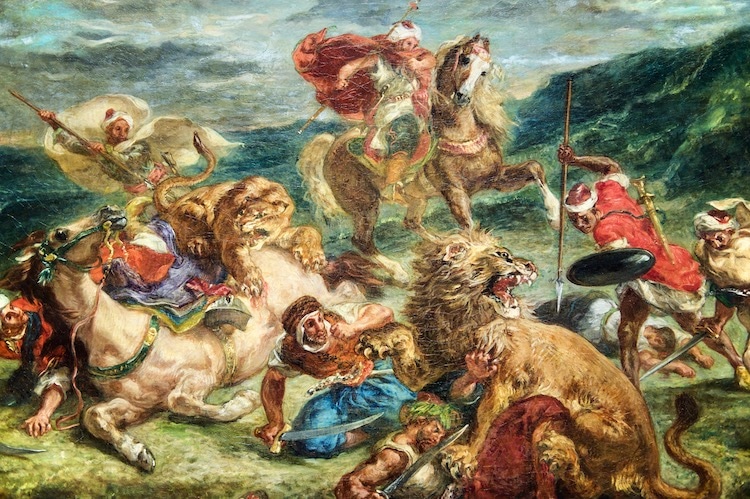
Eugène Delacroix, “Lion Hunt,” 1860-1 (Photo: Wikimedia Commons, CC BY-SA 4.0)
Delacroix’s later art can be identified for its much freer style. Over time, his brushstrokes became even broader, looser, which neglected details in favor of a more Impressionistic depiction.
His remarkable oeuvre inspired generations of future artists, like Pierre-Auguste Renoir and Édouard Manet, who revered Delacroix’s mastery of color and movement.
Related Articles:
20 Famous Artists Everyone Should Know, From Leonardo da Vinci to Frida Kahlo
10 Artists Who Were Masters of Drawing, From Leonardo da Vinci to Pablo Picasso
How Scandal Helped Shape Édouard Manet’s ‘Olympia’ into a Modern Masterpiece
20 Famous Paintings From Western Art History Any Art Lover Should Know
